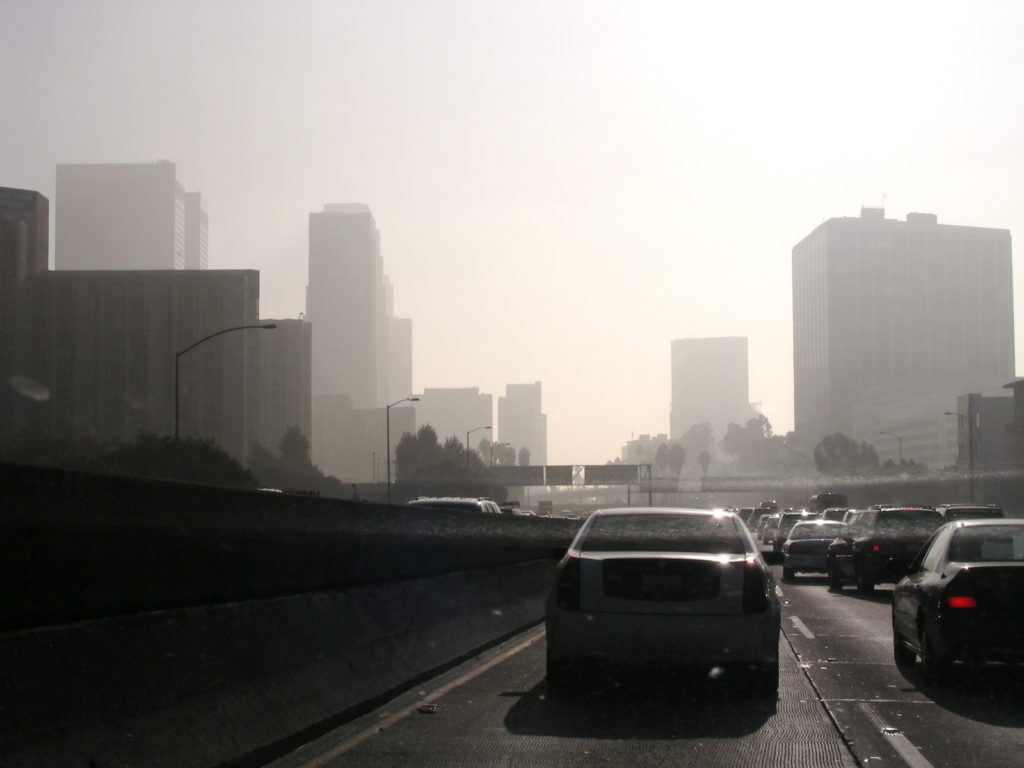Environmental Law Professors File Amicus Brief in Defense of Technology-Forcing in the California Supreme Court
Professors oppose efforts to limit the Legislature’s authority to enact laws protecting the public health and safety of CA residents
My colleague Sean Hecht and I, along with eleven other California environmental law professors, filed an amicus brief in the California Supreme Court this week in support of the California Legislature’s authority to enact technology-forcing statutes.

The underlying case, National Shooting Sports Foundation, Inc., et al. v. State of California, involves a gun control law passed by the Legislature in 2007 requiring the use of a developing technology called “microstamping.” Microstamping is a ballistics identification technology whereby a unique array of identifying characters are etched on a gun and then “stamped” onto each fired cartridge. This allows law enforcement to link a spent cartridge to the particular gun from which it was fired.
The National Shooting Sports Foundation (NSSF), a trade association for gun manufacturers, argued that microstamping was technologically infeasible and challenged the law on the basis that compliance with the law was impossible. After a ruling for the State in Superior Court and for NSSF in the Court of Appeal, the California Supreme Court granted review in March of this year.
Our brief argues that laws which are “impossible” to comply with when enacted are fully within the Legislature’s authority. Legislatures routinely set strict standards that cannot be met using existing technology in order to force industries to refine existing technologies and develop new technologies. These “technology-forcing” frameworks are important tools in any legislature’s toolkit, and our brief includes a variety of successful examples at both the state and federal level where technology-forcing laws drove innovation in order to protect public health and safety.

There is a long and successful history of technology-forcing in environmental law, where industries otherwise have little or no incentive to develop technologies to address negative externalities such as pollution. For example, the ubiquitous catalytic converter is directly traceable to technology-forcing standards for automobile tailpipe emissions developed first by California and later adopted at the national level. Despite growing evidence of the public health risks of automobile pollution, automakers had little incentive to control tailpipe emissions on their own. Congress responded in 1970 with the “drastic medicine” of stringent new standards to “force the state of the art.” As a result, patent activity in the automobile emissions control industry exploded, and VOC and NOx tailpipe emissions would drop more than 95% over the next 30 years.
For a full discussion of other technology-forcing examples, I refer you to our brief linked above. But I’ll leave you with our concluding defense of technology-forcing as both a necessary and well-established aspect of legislative authority:
These examples demonstrate that requiring manufacturers to develop and deploy new technology more protective of public health than what is currently on the market is not a bug of the technology-forcing system – it is the defining feature. Legislatures at both the federal and state level use technology-forcing to drive innovation that “would not have taken place if the standards were not adopted.” Legislatures set standards that may be impossible to meet with current technology, and the regulated industry responds by developing and deploying new technology and by refining and building on existing technologies. These types of regulations are exactly what legislatures can and should do in order to protect public health. As Senator Muskie explained during the passage of the Clean Air Act in 1970:
“The first responsibility of Congress is not the making of technological or economic judgments or even to be limited by what is or appears to be technologically or economically feasible. Our responsibility is to establish what the public interest requires to protect the health of persons. This may mean that people and industries will be asked to do what seems to be impossible at the present time.”
Contrary to the Court of Appeal’s contention that it would be “illogical to uphold a requirement that is currently impossible to accomplish,” the above examples demonstrate that there is a long and successful history of legislating precisely in order to require industries to develop products that better protect public health and safety. And these types of regulations are necessary because industries may not have had any incentive to act absent regulation, like the plastics manufacturers in their “course of continued procrastination” avoiding implementing safety protocols or the automakers conspiring to delay the development of emission controls. Far from being illogical or arbitrary, technology-forcing regulations work, and they are an important aspect of public health and safety policy.
(Amicus Brief at pp. 26-7, citations omitted).
This case is now fully briefed and awaiting oral argument.
Reader Comments
3 Replies to “Environmental Law Professors File Amicus Brief in Defense of Technology-Forcing in the California Supreme Court”
Comments are closed.






Nice. Well put. Loved Muskie.
But I thought barcode microstamping was already feasible. Guess not.
David, the state isn’t conceding (nor are we) that it’s infeasible. That’s the gun lobby’s position, and it hasn’t been adjudicated. The state’s, and our, point is that the question is irrelevant and the law is valid regardless.
I think the issue here is that your comparing car emissions to a basic civil right. For example, if the state passed a law that made it impossible to print or publish books, and we were stuck with only currently published books. That’s an apples to apples comparison to mico-stamping. It means that everyone in the state would have their basic rights immediately impacted for potentially decades .. It’s tyranny.